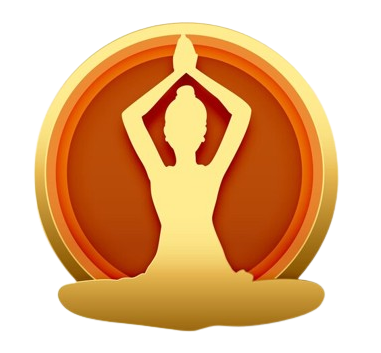Yoga is often viewed as a modern practice for wellness, focusing on flexibility, strength, and mindfulness. However, its roots stretch back thousands of years, deeply entwined with the spiritual, philosophical, and cultural fabric of ancient civilizations. To truly understand yoga, we must look at its long and rich history—one that spans millennia, continents, and countless generations of seekers, sages, and teachers.
The Origins of Yoga: Prehistoric and Early Civilizations
The history of yoga is ancient, with some of its earliest traces found in the Indus Valley Civilization (circa 3300–1700 BCE). Evidence suggests that yoga-like practices were present in this early period, as archaeological sites have uncovered figures in meditative poses and seals with symbols resembling the yogic postures we recognize today. While the exact nature of these early practices remains speculative, it’s clear that the people of this time were already engaging in spiritual and physical practices that laid the groundwork for the later development of yoga.
The Vedic Period (1500–500 BCE)
The next significant step in the evolution of yoga came with the arrival of the Indo-Aryans and the development of the Vedic culture. During this time, the sacred texts known as the Vedas were composed, marking the beginning of formalized spiritual practices that would later contribute to the development of yoga. These texts primarily focus on rituals, hymns, and philosophical musings about the nature of existence, the cosmos, and the divine.
The Rigveda, one of the oldest of the four Vedas, contains references to early forms of meditation and contemplation. While the term “yoga” as we understand it today didn’t yet exist, the concepts of union and spiritual discipline were present in the early Vedic texts. The Upanishads (circa 800–400 BCE), the philosophical extensions of the Vedas, further refined these ideas, introducing key concepts like Atman (the individual self) and Brahman (the universal consciousness), laying the foundation for the spiritual and metaphysical aspects of yoga.
The Classical Period: The Yoga Sutras and the Birth of Yoga Philosophy
Around the 2nd century BCE, the philosophical system of yoga began to take shape more distinctly. This period saw the rise of the Yoga Sutras of Patanjali, one of the most influential texts in the history of yoga. Patanjali, a revered sage, is credited with systematizing yoga into an eightfold path (the Ashtanga Yoga) designed to guide practitioners toward spiritual liberation, or moksha.
The Yoga Sutras are a collection of aphorisms that outline the practical and philosophical aspects of yoga. They introduce the concept of the eight limbs of yoga (ashtanga), which include:
- Yama (moral disciplines)
- Niyama (personal observances)
- Asana (physical postures)
- Pranayama (breath control)
- Pratyahara (withdrawal of the senses)
- Dharana (concentration)
- Dhyana (meditation)
- Samadhi (union or enlightenment)
The Yoga Sutras established yoga not just as a physical practice, but as a holistic approach to life, encompassing ethical conduct, mental discipline, and spiritual awareness. Patanjali’s work was instrumental in transforming yoga from a vague and esoteric practice into a well-defined discipline with a clear path for spiritual development.
The Development of Hatha Yoga: The Physical Body and the Rise of Postures
While Patanjali’s Yoga Sutras focused on the mind and spirit, another important development in the history of yoga took place around the 9th to 15th centuries CE with the rise of Hatha Yoga. This form of yoga placed a stronger emphasis on the physical body, introducing postures (asanas) and breathwork (pranayama) as methods to prepare the body for meditation and spiritual practice.
The Hatha Yoga Pradipika, written in the 15th century by Swatmarama, is one of the most significant texts in the Hatha Yoga tradition. This text outlines many of the postures and techniques still used in modern yoga, such as Savasana (corpse pose) and Sirsasana (headstand). The development of Hatha Yoga marked a turning point in the evolution of yoga, with practitioners now encouraged to develop physical strength, flexibility, and balance to aid in spiritual growth.
Modern Yoga: The Global Spread
The 19th and early 20th centuries saw a significant shift in the practice and understanding of yoga. While yoga had been primarily practiced in India, the British colonial period and the influence of Western thinkers brought yoga to the attention of the global community.
One of the most influential figures in the spread of yoga to the West was Swami Vivekananda, who delivered his famous speech at the Parliament of the World’s Religions in Chicago in 1893. Vivekananda introduced the concept of Raja Yoga (the path of meditation) to the Western world, emphasizing its practical and philosophical aspects. His teachings laid the groundwork for the acceptance of yoga as both a spiritual and physical discipline in the West.
In the early 20th century, Indian yogis such as Sri T. Krishnamacharya, Pattabhi Jois, and B.K.S. Iyengar further developed the practice of yoga, incorporating specific postures and sequences that would become foundational to modern styles of yoga, including Vinyasa, Ashtanga, and Iyengar Yoga. Krishnamacharya, in particular, is often referred to as the “father of modern yoga,” having influenced many of the most well-known yoga teachers of the 20th century.
The Globalization of Yoga: 20th Century and Beyond
The 20th century witnessed an explosion of interest in yoga, both in the East and the West. As yoga became more integrated into Western culture, it was adapted to fit a variety of personal and cultural contexts. The physical postures (asanas) became the central focus of many modern yoga practices, often detached from the spiritual and philosophical aspects of the tradition.
Figures like Indra Devi, Iyengar, and Pattabhi Jois played pivotal roles in popularizing yoga outside of India, leading to the formation of yoga schools, retreats, and teacher training programs across the globe. In the 1960s and 70s, the countercultural movement and the rise of interest in Eastern philosophies contributed to the widespread adoption of yoga in the West, with celebrities, health enthusiasts, and spiritual seekers flocking to yoga studios and retreats.
Today, yoga is a global phenomenon practiced by millions of people worldwide, with styles ranging from rigorous physical practices like Vinyasa and Power Yoga to more meditative forms such as Yin Yoga and Restorative Yoga. Modern yoga has expanded beyond its roots in Hinduism to be embraced by people of all backgrounds and belief systems, offering a variety of benefits for mental, physical, and emotional well-being.
Conclusion: Yoga’s Enduring Legacy
Yoga’s journey from its ancient roots in the Indus Valley to its modern-day global presence is a testament to its enduring relevance and adaptability. Whether practiced for spiritual enlightenment, physical health, or emotional well-being, yoga remains a powerful tool for self-awareness and transformation.
The practice of yoga, in all its forms, encourages us to connect to something greater than ourselves—whether that be through meditation, physical postures, or the simple act of breathing mindfully. While its techniques and methods have evolved over the millennia, the core principles of yoga—union, balance, and awareness—continue to inspire and guide practitioners on their path to wholeness.
No matter where yoga takes you in your personal journey, its deep history serves as a reminder that the practice is about more than just postures—it is about connecting the body, mind, and spirit to create a more harmonious and conscious life.
Would you like to dive deeper into any particular aspect of yoga’s history, such as specific figures or practices?





